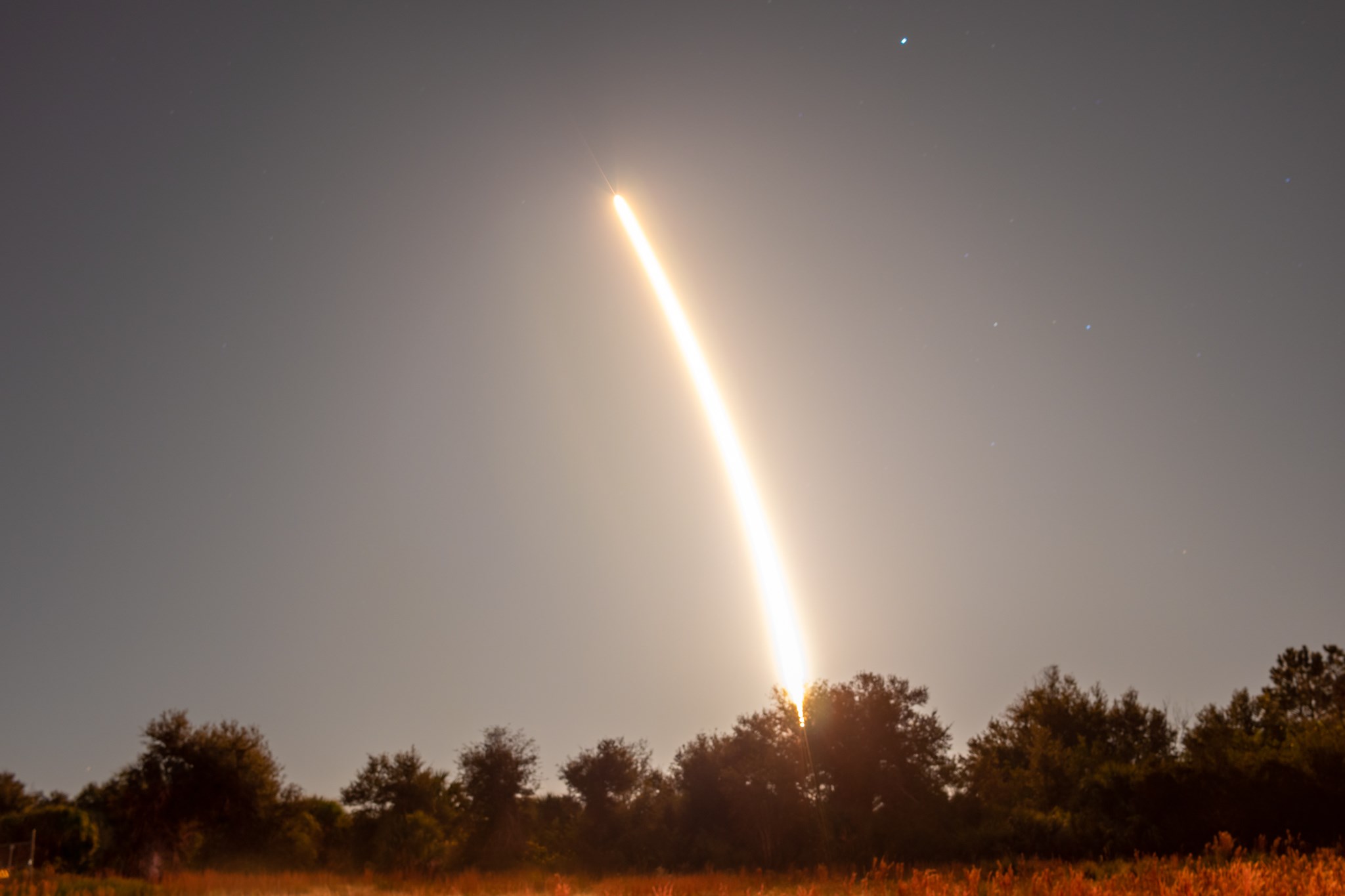Cite as: Špaček, J. (2021) “The Race to Put the First Humans on Mars”. Primordial Scoop, 2021, e0211. https://doi.org/10.52400/OKOK8552
NASA, China National Space Administration (CNSA), and SpaceX want to put humans on Mars in the next decades. The first to do so will be celebrated and remembered as a Christopher Columbus of 21st century. State agencies do it for prestige and science, SpaceX to make humans multiplanetary species. Let us see who has the best chance to win this “competition”.
NASA
NASA is going to Mars through the Moon: To “land the first woman and next man on the Moon by 2024” is, according to NASA’s Artemis program, a “stepping stone for our next greatest leap—human exploration of Mars”.
Estimates on the exact timing of the first manned Mars mission vary. According to the 2019 IDA Science & Technology Policy Institute report, with current funding and program relying on the Space Launch System with Orion capsule, the first human mission to Mars by NASA will most likely start in 2039, but could be delayed even more, depending on the budget profile and political will. However, Ex-NASA Administrator Jim Bridenstine was in 2019 more optimistic. When asked about the date of the first human mission to Mars, he said “I am not willing to rule out 2033 at all.”
The truth is, that NASA’s plans usually change after each US presidential election. Biden’s administration recently endorsed the Artemis program although it is yet to be seen to what extent. Competition with China over 21st century Moon landings could prompt the USA administration to stick with the original Artemis plans. In which case Mars human exploration by NASA could happen before the year 2040.
CNSA
The China National Space Administration (CNSA) is less open about its far future plans. Based on 2019 CNSA spokesman PEI Zhaoyu, Mars exploration is a major focus of China’s future deep space exploration. Chinese manned Mars exploration program will, similarly to NASA’s approach, be preceded by Moon landings.
The Chinese Lunar Exploration Program has already demonstrated successful orbiter, lander, and rover missions. Recent successful Chang’e-5 mission was the first Lunar regolith sample return mission after a 45 years long break. CNSA Lunar program is supposed to graduate to human Moon landings and a Moon base before the year 2030.
Unmanned phase of CNSA Mars program is currently underway: Tianwen-1 mission, which has successfully entered the orbit of Mars on February 10th, consists of a lander, rover, and orbiter. Its objectives are to find evidence of both current and past life and to assess the planet’s environment, including subsurface ice. According to CNSA officials, if the Tuenwen-1 mission succeeds, the Martian sample return mission will be attempted around the year 2030 (before the planned NASA Mars sample return mission in early 2030s).
Chinese long-term plans extending to the 2050s include a research station on Mars.
According to the 2019 U.S.-China Economic and Security Review, China seeks to explore Mars and other celestial bodies in order “to protect China’s space rights and interests”. The exact Chinese space budget is unknown, but in the year 2017 it was estimated to be about $11 billion – approximately half of NASA’s budget.
Although NASA currently has a big lead, both in terms of technology and experience, CNSA has a good record of sticking to its timelines and completing missions faster and cheaper than NASA does. Because of their unchanging political scene and sharp focus on their goals, the Chinese have an advantage in executing long term plans. In the end, the race between NASA and CNSA to put humans on Mars might be a close one.
SpaceX
The third contender in the race to put first humans on Mars is surprisingly not a national agency, but the private company SpaceX. Unlike NASA and CNSA, the Moon missions are not a priority for SpaceX. SpaceX might still participate in the manned Lunar exploration as a contractor for NASA and as transport provider for private customers such as Yusaku Maezawa (who is sponsoring the Dear Moon flyby mission), but it aims directly for Mars.
Last December, SpaceX CEO Elon Musk declared that the Starship Mars Mission could launch humans to Mars in 2026, but this seems to be too ambitious. Based on SpaceX history and current rate of progress in Starship prototype development along with the Starship factory construction in Boca Chica Texas, I estimate that SpaceX will have the ability to transport crew to Mars’ surface in the early 2030s.
Date of SpaceX piloted Mars landing is not only a question of developing means of transport, but it is also a question of development of technologies ensuring crew safety during the entire mission. Mid to late 2030s seems a reasonable estimate – still a decade or two before NASA and CNSA current plans.
Other contenders
Others have pledged to send humans to Mars as well, but they seem unlikely to succeed in the first half of the 21st century.
United Arab Emirates recently reached orbit of Mars with their “Hope” Mars atmosphere probe orbiter, which was a great success for this small country. Their long-term plan includes Mars colony within next century. Focus on space is inspiring young people in the Arab world and eases the transition from petrol to knowledge-based economy.
Jeff Bezos, owner of Blue Origin, has quitted Amazon and will dedicate more time to his space venture. Unfortunately for Mars fans, Bezos’ plans have shifted from Mars to near Earth free floating colonies.
Couple years ago, Boeing boasted that they would beat SpaceX to Mars. This now seems highly unlikely given their sluggish progress and extremely high price tag on their Space Launch System.
Others (ESA, Virgin Galactic, Roscosmos, JAXA, and space agencies of other countries) are unlikely to join the race soon. This might be changed by international collaborations and accessibility to a technology of fully reusable rockets. Sufficiently rich entities might soon be able to simply buy or rent equipment for return Mars missions developed by SpaceX.
Place your bets!
Humanity wants to go to Mars and will soon have the technology to go affordably. We will send explorers to Mars. It is only a matter who is going to be the first and forever remembered.
I personally believe that SpaceX (or a SpaceX-NASA team) has the best chance of “winning” this race, but we still have a long way to go, and we might see some surprises along the way.
Unless there is a major global apocalypse, we can be certain about human presence on Mars before the year 2050 and likely as soon as in 2030s.




It’s probably worth to note that the opportunity (pun not intended) to launch for Mars occurs every approximately 2 years and 2 months. So a slight delay might force the launch to reschedule for the following launch window. But yeah, this does not matter much when talking about decades.
Exactly, that’s what happened to ExoMars 2020 mission (ESA + Roscosmos).
What I lack in this article is at least a mention of broader geopolitical context.
1) „State agencies do it for prestige and science“ – How have you come to this conclusion? Why do you think that „prestige“ is the motive behind it (especially when the financial implications of such projects are taken into consideration)?
I have two significant remarks stemming from the fact that space was recognised as an operational domain in 2019 by NATO. What does it actually mean? Most importantly, States are obliged to build their space capacities in order to meet the requirement of art. 5 of the Washington Treaty. In a nutshell, an armed attack on one member of NATO is an attack on all of its members and States should build their capacities to defend themselves. Second, it helps us to realize that it is possible to conduct an armed conflict in space (but it does not imply that States are encouraged to act such!)
I am not convinced that States invest heavily in these projects only because of prestige and science but also as a reaction to the broadening of operational domains. Do you think that it will affect the situation? If so, how?
More information:
https://www.nato.int/cps/en/natohq/topics_175419.htm
https://www.nato.int/cps/en/natohq/topics_110496.htm
2) „the first human mission to Mars by NASA will most likely start in 2039, but could be delayed even more, depending on the budget profile and political will.“ – Why do you differ „the budget profile and political will“? Don’t you think that political will might be expressed by the budget profile (especially in the case of state agencies)? Can you imagine other aspects of political will that would likely affect the situation?
3) „The truth is, that NASA’s plans usually change after each US presidential election.“ – How did you come to the conclusion (a reference to the sources of this claim would be helpful). Is it relevant if the president is a Democrat or a Republican?
4) „Because of their unchanging political scene and sharp focus on their goals, the Chinese have an advantage in executing long term plans.“ – But you still believe that SpaceX has the best chance despite this claim, right? (more comments down below)
5) „The third contender in the race to put first humans on Mars is surprisingly not a national agency, but the private company SpaceX.“ – Why do you say „surprisingly“? Why is SpaceX so unique despite the fact of not being a national agency?
6) „Others (ESA, Virgin Galactic, Roscosmos, JAXA, and space agencies of other countries) are unlikely to join the race soon. This might be changed by international collaborations and accessibility to a technology of fully reusable rockets.“ – How do you imagine forms of international collaborations?
7) „I personally believe that SpaceX (or a SpaceX-NASA team) has the best chance of “winning” this race, but we still have a long way to go, and we might see some surprises along the way.“ – Why do you still believe that SpaceX has the best chance? I am extremely lacking any further explanation. It could also be NASA (due to extensive funding) or CNSA (due to its numerous personnel).
I look forward to your comments back!
Thank you for your questions!
1) Cunningham’s Law states: “The best way to get the right answer on the internet is not to ask a question; it’s to post the wrong answer.”
I believe that you could provide better answer to the first question and comments on the geopolitical situation than I could. Would you like to write a short article about this topic?
2) In my opinion, the funding in NASA does not directly translate on goals. Robert Zubrin distinguishes a purpose-driven effort from a vendor-driven plan: “A purpose-driven plan spends money to do things. A vendor-driven plan does things in order to spend money.” NASA currently spends billions on development of the SLS rocket and Orion space capsule, which, in my opinion, is already obsolete and will be overpriced and outclassed by the time SpaceX Starship is finished. Currently, the political will seems to be to make vendors happy, instead of achieving any specific goal. Using SpaceX’s existing rockets instead of having Boeing to finish SLS would save billions of US taxpayers money, and could be used to achieve a goal.
3) The statement that “NASA’s plans usually change after each US presidential election” is considered to be a general knowledge: https://www.scientificamerican.com/article/its-time-to-end-washington-rsquo-s-bad-habit-of-changing-nasa-rsquo-s-goals-in-midstream/
We are yet to see if Biden’s administration endorses “Trump’s” Artemis program with its current schedule or if they make budget cuts and changes. I’m little pessimistic on that.
4) Yes. (see 7)
5) “Surprisingly” because until recently, space was domain of government agencies.
6) Collaborations allow to share the costs among several entities, making Mars more accessible. For example, ESA and Roscosmos are now collaborating on ExoMars 2020 mission (which was postponed to 2022). Collaborations might also work in a form of rich guys buying privately developed technology, “renting spaceships” to send probes all over the solar system.
7) In my opinion NASA is investing too much time and money on SLS, Orion, and Lunar Gateway. Even if they could match the rate of technological progress of SpaceX, they would go to Moon first. But NASA have a use of commercial vehicles in its current program, hence NASA will likely team up with SpaceX, once Starships are ready to go to Mars.
CNSA needs more time to develop its technological level. They still don’t have reusable rockets and without them the deep space exploration is prohibitively costly.
Thank you for your comments!
1) I accept this challenge but honestly said, one article will not be enough to cover the issue. Can we agree on a series of articles instead of just one?
2) I think it is necessary to distinguish among States and their agencies. I will try to explain it in greater detail in my article and also take into consideration Rober Zubrin’s argument.
3) I agree. In my opinion, it is still important to further clarify how profound the change actually is.
4) No more comments.
5) Now it makes sense.
6) I think that forms of international collaboration vary based on the actors involved. In general, we can say that international collaboration is usually much easier among private actors than among States (because political context is not as a decisive factor as it is just among States).
7) What you have written is undoubtedly linked to your comment no. 2 and you hit the nail on the head by showing the complexity of different steps which do not always reflect the goals.
Pingback: The Search for Life on Mars Must Start Now – The Primordial Scoop